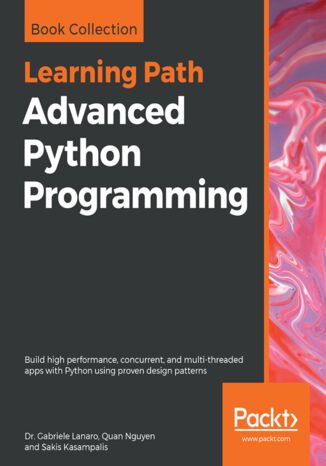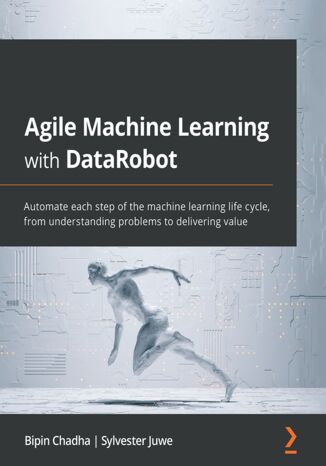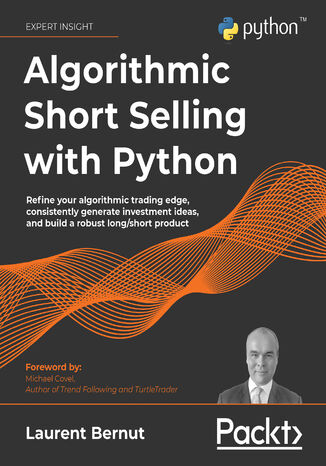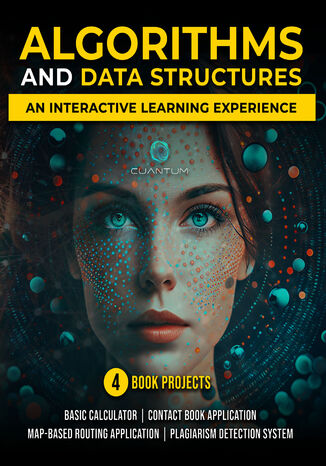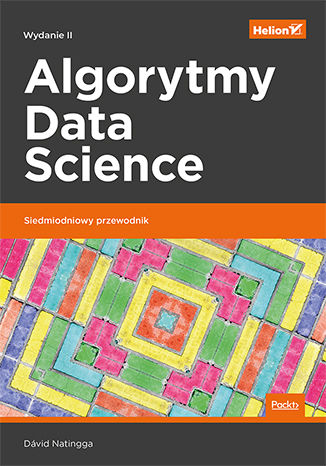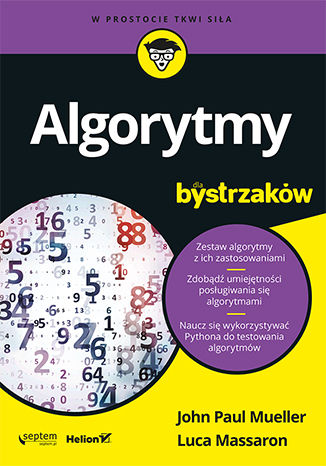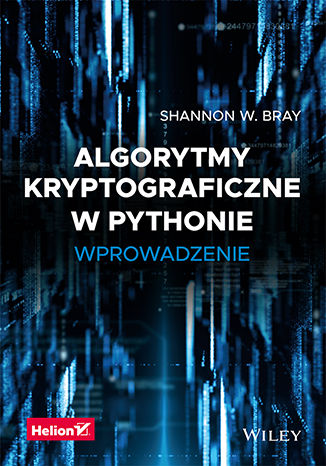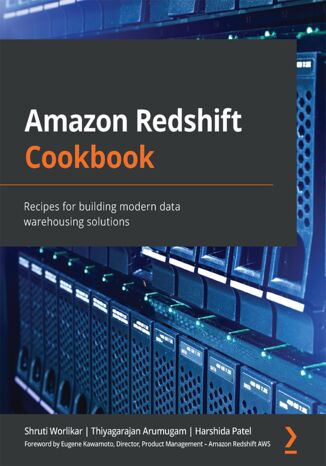Kategorien
E-Books
-
Wirtschaft
- Bitcoin
- Geschäftsfrau
- Coaching
- Controlling
- E-Business
- Ökonomie
- Finanzen
- Börse und Investitionen
- Persönliche Kompetenzen
- Computer im Büro
- Kommunikation und Verhandlungen
- Kleines Unternehmen
- Marketing
- Motivation
- Multimedia-Training
- Immobilien
- Überzeugung und NLP
- Steuern
- Sozialpolitik
- Handbȕcher
- Präsentationen
- Führung
- Public Relation
- Berichte, Analysen
- Geheimnis
- Social Media
- Verkauf
- Start-up
- Ihre Karriere
- Management
- Projektmanagement
- Personal (HR)
-
Für Kinder
-
Für Jugendliche
-
Bildung
-
Enzyklopädien, Wörterbücher
-
E-Presse
- Architektura i wnętrza
- Biznes i Ekonomia
- Haus und Garten
- E-Business
- Finanzen
- Persönliche Finanzen
- Unternehmen
- Fotografie
- Informatik
- HR und Gehaltsabrechnung
- Computer, Excel
- Buchhaltung
- Kultur und Literatur
- Wissenschaftlich und akademisch
- Umweltschutz
- meinungsbildend
- Bildung
- Steuern
- Reisen
- Psychologie
- Religion
- Landwirtschaft
- Buch- und Pressemarkt
- Transport und Spedition
- Gesundheit und Schönheit
-
Geschichte
-
Informatik
- Office-Programme
- Datenbank
- Bioinformatik
- IT Branche
- CAD/CAM
- Digital Lifestyle
- DTP
- Elektronik
- Digitale Fotografie
- Computergrafik
- Spiele
- Hacking
- Hardware
- IT w ekonomii
- Wissenschaftliche Pakete
- Schulbücher
- Computergrundlagen
- Programmierung
- Mobile-Programmierung
- Internet-Server
- Computernetzwerke
- Start-up
- Betriebssysteme
- Künstliche Inteligenz
- Technik für Kinder
- Webmaster
-
Andere
-
Fremdsprachen lernen
-
Kultur und Kunst
-
Lektüre
-
Literatur
- Anthologien
- Ballade
- Biografien und Autobiografien
- Für Erwachsene
- Drama
- Tagebücher, Memoiren, Briefe
- Epos
- Essay
- Science Fiction
- Felietonys
- Fiktion
- Humor, Satire
- Andere
- Klassisch
- Krimi
- Sachbücher
- Belletristik
- Mity i legendy
- Nobelpreisträger
- Kurzgeschichten
- Gesellschaftlich
- Okultyzm i magia
- Erzählung
- Erinnerungen
- Reisen
- Gedicht
- Poesie
- Politik
- Populärwissenschaftlich
- Roman
- Historischer Roman
- Prosa
- Abenteuer
- Journalismus
- Reportage
- Romans i literatura obyczajowa
- Sensation
- Thriller, Horror
- Interviews und Erinnerungen
-
Naturwissenschaften
-
Sozialwissenschaften
-
Schulbücher
-
Populärwissenschaft und akademisch
- Archäologie
- Bibliotekoznawstwo
- Filmwissenschaft
- Philologie
- Polnische Philologie
- Philosophie
- Finanse i bankowość
- Erdkunde
- Wirtschaft
- Handel. Weltwirtschaft
- Geschichte und Archäologie
- Kunst- und Architekturgeschichte
- Kulturwissenschaft
- Linguistik
- Literaturwissenschaft
- Logistik
- Mathematik
- Medizin
- Geisteswissenschaften
- Pädagogik
- Lehrmittel
- Populärwissenschaftlich
- Andere
- Psychologie
- Soziologie
- Theatrologie
- Teologie
- Theorien und Wirtschaftswissenschaften
- Transport i spedycja
- Sportunterricht
- Zarządzanie i marketing
-
Handbȕcher
-
Spielanleitungen
-
Professioneller und fachkundige Leitfaden
-
Jura
- Sicherheit und Gesundheit am Arbeitsplatz
- Geschichte
- Verkehrsregeln. Führerschein
- Rechtswissenschaften
- Gesundheitswesen
- Allgemeines. Wissenskompendium
- akademische Bücher
- Andere
- Bau- und Wohnungsrecht
- Zivilrecht
- Finanzrecht
- Wirtschaftsrecht
- Wirtschafts- und Handelsrecht
- Strafrecht
- Strafrecht. Kriminelle Taten. Kriminologie
- Internationales Recht
- Internationales und ausländisches Recht
- Gesundheitsschutzgesetz
- Bildungsrecht
- Steuerrecht
- Arbeits- und Sozialversicherungsrecht
- Öffentliches, Verfassungs- und Verwaltungsrecht
- Familien- und Vormundschaftsrecht
- Agrarrecht
- Sozialrecht, Arbeitsrecht
- EU-Recht
- Industrie
- Agrar- und Umweltschutz
- Wörterbücher und Enzyklopädien
- Öffentliche Auftragsvergabe
- Management
-
Führer und Reisen
- Afrika
- Alben
- Südamerika
- Mittel- und Nordamerika
- Australien, Neuseeland, Ozeanien
- Österreich
- Asien
- Balkan
- Naher Osten
- Bulgarien
- China
- Kroatien
- Tschechische Republik
- Dänemark
- Ägypten
- Europa
- Frankreich
- Berge
- Griechenland
- Spanien
- Niederlande
- Island
- Litauen
- Mapy, Plany miast, Atlasy
- Miniführer
- Deutschland
- Norwegen
- Aktive Reisen
- Polen
- Portugal
- Andere
- Russland
- Rumänien
- Slowakei
- Slowenien
- Schweiz
- Schweden
- Welt
- Türkei
- Ukraine
- Ungarn
- Großbritannien
- Italien
-
Psychologie
- Lebensphilosophien
- Kompetencje psychospołeczne
- zwischenmenschliche Kommunikation
- Mindfulness
- Allgemeines
- Überzeugung und NLP
- Akademische Psychologie
- Psychologie von Seele und Geist
- Arbeitspsychologie
- Relacje i związki
- Elternschafts- und Kinderpsychologie
- Problemlösung
- Intellektuelle Entwicklung
- Geheimnis
- Sexualität
- Verführung
- Aussehen ind Image
- Lebensphilosophien
-
Religion
-
Sport, Fitness, Diäten
-
Technik und Mechanik
Hörbücher
-
Wirtschaft
- Bitcoin
- Geschäftsfrau
- Coaching
- Controlling
- E-Business
- Ökonomie
- Finanzen
- Börse und Investitionen
- Persönliche Kompetenzen
- Kommunikation und Verhandlungen
- Kleines Unternehmen
- Marketing
- Motivation
- Immobilien
- Überzeugung und NLP
- Steuern
- Handbȕcher
- Präsentationen
- Führung
- Public Relation
- Geheimnis
- Social Media
- Verkauf
- Start-up
- Ihre Karriere
- Management
- Projektmanagement
- Personal (HR)
-
Für Kinder
-
Für Jugendliche
-
Bildung
-
Enzyklopädien, Wörterbücher
-
Geschichte
-
Informatik
-
Andere
-
Fremdsprachen lernen
-
Kultur und Kunst
-
Lektüre
-
Literatur
- Anthologien
- Ballade
- Biografien und Autobiografien
- Für Erwachsene
- Drama
- Tagebücher, Memoiren, Briefe
- Epos
- Essay
- Science Fiction
- Felietonys
- Fiktion
- Humor, Satire
- Andere
- Klassisch
- Krimi
- Sachbücher
- Belletristik
- Mity i legendy
- Nobelpreisträger
- Kurzgeschichten
- Gesellschaftlich
- Okultyzm i magia
- Erzählung
- Erinnerungen
- Reisen
- Poesie
- Politik
- Populärwissenschaftlich
- Roman
- Historischer Roman
- Prosa
- Abenteuer
- Journalismus
- Reportage
- Romans i literatura obyczajowa
- Sensation
- Thriller, Horror
- Interviews und Erinnerungen
-
Naturwissenschaften
-
Sozialwissenschaften
-
Populärwissenschaft und akademisch
-
Handbȕcher
-
Professioneller und fachkundige Leitfaden
-
Jura
-
Führer und Reisen
-
Psychologie
- Lebensphilosophien
- zwischenmenschliche Kommunikation
- Mindfulness
- Allgemeines
- Überzeugung und NLP
- Akademische Psychologie
- Psychologie von Seele und Geist
- Arbeitspsychologie
- Relacje i związki
- Elternschafts- und Kinderpsychologie
- Problemlösung
- Intellektuelle Entwicklung
- Geheimnis
- Sexualität
- Verführung
- Aussehen ind Image
- Lebensphilosophien
-
Religion
-
Sport, Fitness, Diäten
-
Technik und Mechanik
Videokurse
-
Datenbank
-
Big Data
-
Biznes, ekonomia i marketing
-
Cybersicherheit
-
Data Science
-
DevOps
-
Für Kinder
-
Elektronik
-
Grafik / Video / CAX
-
Spiele
-
Microsoft Office
-
Entwicklungstools
-
Programmierung
-
Persönliche Entwicklung
-
Computernetzwerke
-
Betriebssysteme
-
Softwaretest
-
Mobile Geräte
-
UX/UI
-
Web development
Podcasts
- E-Books
- Programmierung
- Python
Python
Dr. Gabriele Lanaro, Quan Nguyen, Sakis Kasampalis
This Learning Path shows you how to leverage the power of both native and third-party Python libraries for building robust and responsive applications. You will learn about profilers and reactive programming, concurrency and parallelism, as well as tools for making your apps quick and efficient. You will discover how to write code for parallel architectures using TensorFlow and Theano, and use a cluster of computers for large-scale computations using technologies such as Dask and PySpark. With the knowledge of how Python design patterns work, you will be able to clone objects, secure interfaces, dynamically choose algorithms, and accomplish much more in high performance computing.By the end of this Learning Path, you will have the skills and confidence to build engaging models that quickly offer efficient solutions to your problems.This Learning Path includes content from the following Packt products:• Python High Performance - Second Edition by Gabriele Lanaro• Mastering Concurrency in Python by Quan Nguyen• Mastering Python Design Patterns by Sakis Kasampalis
DataRobot enables data science teams to become more efficient and productive. This book helps you to address machine learning (ML) challenges with DataRobot's enterprise platform, enabling you to extract business value from data and rapidly create commercial impact for your organization.You'll begin by learning how to use DataRobot's features to perform data prep and cleansing tasks automatically. The book then covers best practices for building and deploying ML models, along with challenges faced while scaling them to handle complex business problems. Moving on, you'll perform exploratory data analysis (EDA) tasks to prepare your data to build ML models and ways to interpret results. You'll also discover how to analyze the model's predictions and turn them into actionable insights for business users. Next, you'll create model documentation for internal as well as compliance purposes and learn how the model gets deployed as an API. In addition, you'll find out how to operationalize and monitor the model's performance. Finally, you'll work with examples on time series forecasting, NLP, image processing, MLOps, and more using advanced DataRobot capabilities.By the end of this book, you'll have learned to use DataRobot's AutoML and MLOps features to scale ML model building by avoiding repetitive tasks and common errors.
If you are in the long/short business, learning how to sell short is not a choice. Short selling is the key to raising assets under management. This book will help you demystify and hone the short selling craft, providing Python source code to construct a robust long/short portfolio. It discusses fundamental and advanced trading concepts from the perspective of a veteran short seller.This book will take you on a journey from an idea (“buy bullish stocks, sell bearish ones”) to becoming part of the elite club of long/short hedge fund algorithmic traders. You’ll explore key concepts such as trading psychology, trading edge, regime definition, signal processing, position sizing, risk management, and asset allocation, one obstacle at a time. Along the way, you’ll will discover simple methods to consistently generate investment ideas, and consider variables that impact returns, volatility, and overall attractiveness of returns.By the end of this book, you’ll not only become familiar with some of the most sophisticated concepts in capital markets, but also have Python source code to construct a long/short product that investors are bound to find attractive.
Begin your journey with an introduction to Python and algorithms, laying the groundwork for more complex topics. You will start with the basics of Python programming, ensuring a solid foundation before diving into more advanced and sophisticated concepts. As you progress, you'll explore elementary data containers, gaining an understanding of their role in algorithm development.Midway through the course, you’ll delve into the art of sorting and searching, mastering techniques that are crucial for efficient data handling. You will then venture into hierarchical data structures, such as trees and graphs, which are essential for understanding complex data relationships. By mastering algorithmic techniques, you’ll learn how to implement solutions for a variety of computational challenges.The latter part of the course focuses on advanced topics, including network algorithms, string and pattern deciphering, and advanced computational problems. You'll apply your knowledge through practical case studies and optimizations, bridging the gap between theoretical concepts and real-world applications. This comprehensive approach ensures you are well-prepared to handle any programming challenge with confidence.
Algorytmy Data Science. Siedmiodniowy przewodnik. Wydanie II
Data science jest interdyscyplinarną dziedziną naukową łączącą osiągnięcia uczenia maszynowego, statystyki i eksploracji danych. Umożliwia wydobywanie nowej wiedzy z istniejących danych poprzez stosowanie odpowiednich algorytmów i analizy statystycznej. Stworzono dotąd wiele algorytmów tej kategorii i wciąż powstają nowe. Stanowią one podstawę konstruowania modeli umożliwiających wyodrębnianie określonych informacji z danych odzwierciedlających zjawiska zachodzące w świecie rzeczywistym, pozwalają też na formułowanie prognoz ich przebiegu w przyszłości. Algorytmy data science są postrzegane jako ogromna szansa na zdobycie przewagi konkurencyjnej, a ich znaczenie stale rośnie. Ta książka jest zwięzłym przewodnikiem po algorytmach uczenia maszynowego. Jej cel jest prosty: w ciągu siedmiu dni masz opanować solidne podstawy siedmiu najważniejszych dla uczenia maszynowego algorytmów. Opisom poszczególnych algorytmów towarzyszą przykłady ich implementacji w języku Python, a praktyczne ćwiczenia, które znajdziesz na końcu każdego rozdziału, ułatwią Ci lepsze zrozumienie omawianych zagadnień. Co więcej, dzięki książce nauczysz się właściwie identyfikować problemy z zakresu data science. W konsekwencji dobieranie odpowiednich metod i narzędzi do ich rozwiązywania okaże się dużo łatwiejsze. W tej książce: efektywne implementacje algorytmów uczenia maszynowego w języku Python klasyfikacja danych przy użyciu twierdzenia Bayesa, drzew decyzyjnych i lasów losowych podział danych na klastery za pomocą algorytmu k-średnich stosowanie analizy regresji w parametryzacji modeli przewidywań analiza szeregów czasowych pod kątem trendów i sezonowości danych Algorytmy data science: poznaj, zrozum, zastosuj!
John Paul Mueller, Luca Massaron
Zestaw algorytmy z ich zastosowaniami Zdobądź umiejętności posługiwania się algorytmami Naucz się wykorzystywać Pythona do testowania algorytmów Myśl za pomocą algorytmów Ten jasny i przystępny przewodnik pokazuje, w jaki sposób algorytmy wpływają na nasze codzienne życie - od interakcji online po osobistą komunikację. Są również niezwykle ważne, jeśli chodzi o podejmowanie różnego rodzaju decyzji. Jeśli chcesz wiedzieć, jak korzystać z procedur rozwiązywania problemów w prawdziwym świecie, książka Algorytmy dla bystrzaków zagwarantuje Ci doskonałe wprowadzenie do tej fascynującej, wszechobecnej dziedziny. W książce: Operacje na danych Projektowanie algorytmów Podstawy teorii grafów Zarządzanie danymi o dużej objętości Upraszczanie złożonych algorytmów
Algorytmy kryptograficzne w Pythonie. Wprowadzenie
Dzięki kryptografii możemy w dużym stopniu zabezpieczyć swoje dane. Z szyfrowaną komunikacją wiążą się jednak kontrowersje i sprzeczności interesów. Przestępcy, ale również rządy, policja i służby wywiadowcze dążą do uzyskania możliwości wglądu we wszystkie formy komunikacji. Świat toczy wojnę o to, co można zaszyfrować, co powinno być zaszyfrowane i kto powinien dysponować kluczem pozwalającym odczytać zaszyfrowane wiadomości należące do innej osoby. W tej sytuacji zrozumienie, czym jest szyfrowanie, jak je stosować i jak się upewniać co do autentyczności i poufności otrzymywanych danych, staje się niezwykle ważne. Ta książka jest przystępnym wprowadzeniem do kryptografii i bibliotek kryptograficznych Pythona. Omówiono tu podstawowe koncepcje z tej dziedziny, najważniejsze algorytmy i niezbędny zakres podstaw matematycznych: liczby pierwsze, teorię grup czy generatory liczb pseudolosowych. Wyjaśniono, czym są poufność, autentyczność i integralność wiadomości. Zaprezentowano najciekawsze biblioteki kryptograficzne Pythona i dokładnie pokazano, w jaki sposób można je wykorzystywać we własnych implementacjach. Wiele z prezentowanych koncepcji, między innymi kryptografia klucza publicznego i implementacja kryptografii krzywych eliptycznych, zostało przedstawionych w praktyce, za pomocą kodu Pythona, tak aby można było wymieniać dane w bardzo bezpiecznym formacie przez niezabezpieczony kanał. W książce: podstawy Pythona i kryptografii protokoły kryptograficzne i matematyka kryptograficzna kryptoanaliza za pomocą kodu Pythona kryptografia wizualna: biblioteki, algorytmy, tryby kodowania integralność wiadomości tworzenie rozwiązań kryptograficznych w Pythonie Masz coś do ukrycia? Zaszyfruj to w Pythonie!
Amazon Redshift Cookbook. Recipes for building modern data warehousing solutions
Shruti Worlikar, Thiyagarajan Arumugam, Harshida Patel, Eugene Kawamoto
Amazon Redshift is a fully managed, petabyte-scale AWS cloud data warehousing service. It enables you to build new data warehouse workloads on AWS and migrate on-premises traditional data warehousing platforms to Redshift.This book on Amazon Redshift starts by focusing on Redshift architecture, showing you how to perform database administration tasks on Redshift. You'll then learn how to optimize your data warehouse to quickly execute complex analytic queries against very large datasets. Because of the massive amount of data involved in data warehousing, designing your database for analytical processing lets you take full advantage of Redshift's columnar architecture and managed services. As you advance, you’ll discover how to deploy fully automated and highly scalable extract, transform, and load (ETL) processes, which help minimize the operational efforts that you have to invest in managing regular ETL pipelines and ensure the timely and accurate refreshing of your data warehouse. Finally, you'll gain a clear understanding of Redshift use cases, data ingestion, data management, security, and scaling so that you can build a scalable data warehouse platform.By the end of this Redshift book, you'll be able to implement a Redshift-based data analytics solution and have understood the best practice solutions to commonly faced problems.

